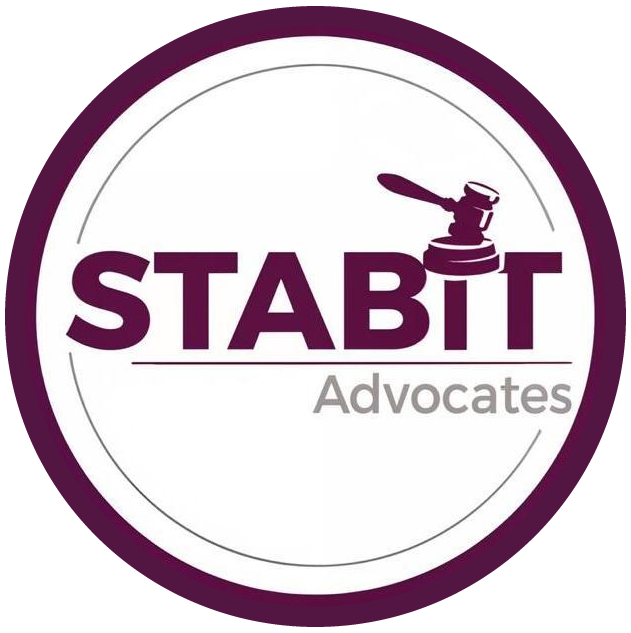Sanctions, Sovereignty & Supply Chains: 2025's Legal Flashpoints Every Multinational Must Master In 2025, the…

The Remote Work Revolution: Navigating the Legal Landscape of the New Corporate Reality. A Stabit Opinion
The Remote Work Revolution: Navigating the Legal Landscape of the New Corporate Reality. A stabit Opinion
October 2, 2025 10:44 am
Executive Summary — The Remote work Revolution
The work-from-home (WFH) phenomenon, once a niche perk, has fundamentally evolved into a structural pillar of the modern global workforce, catapulted from the periphery to the mainstream by the COVID-19 pandemic.1 2 As multinational corporations push for a return-to-office (RTO), they are met with significant resistance from a workforce that values the autonomy and flexibility of remote work. This creates a critical inflection point, forcing companies to navigate a complex and evolving web of legal risks, operational challenges, and cultural transformations.3 This article examines this new corporate reality from a legal professional’s perspective, analyzing the historical evolution, the current dynamics of RTO resistance, the multifaceted legal liabilities, and a forward-looking framework for responsibly integrating remote work to ensure fairness, compliance, and mutual benefit in this new era of work.4 5
Hybrid Work Is the New, Permanent Baseline
The shift to remote work is not a temporary trend but a permanent structural change. Before 2019, only 6.5% of U.S. private sector workers and 5.4% of the EU workforce primarily worked from home.6 At its peak, this figure jumped to 35% in the U.S. and nearly 40% in the EU.6 Projections for 2025 show remote work stabilizing at 28% of all paid U.S. workdays, with 48% of the global workforce engaged in some form of remote work.7 Corporations must treat WFH as a permanent operating model requiring dedicated compliance resources, not a pandemic contingency.
RTO Mandates Create Significant Talent Attrition Risk
Employee resistance to RTO mandates is rooted in tangible benefits to well-being and finances. A staggering 98% of remote workers wish to remain remote for their careers.8 This preference is backed by significant savings, averaging $7,000 annually per employee.9 Consequently, strict RTO mandates are a major flight risk; 46% of remote-capable workers state they would be unlikely to stay at their job if remote work were no longer an option, and a 2024 survey revealed that 8 in 10 employers have already lost valuable talent due to their RTO mandates.10
The Legal Risk Matrix Is Global and Complex
The shift to remote work has redefined the legal landscape, exposing employers to a web of risks spanning multiple jurisdictions. Key risk domains include:
- Workplace Safety & Workers’ Compensation:An employer’s duty to ensure a safe working environment now extends to employees’ homes, with jurisdictions like Germany and the UK applying full OH&S statutes to home offices.11 12 13
- Data Privacy & Cybersecurity:Remote work amplifies data breach vulnerabilities. Regulations like GDPR, China’s PIPL, and Rwanda’s DPP Law impose strict requirements for secure data handling, breach notification, and cross-border data transfers.14 15 16
- Discrimination & Accommodation:Rigid RTO mandates risk disparate impact claims. Laws like the U.S. ADA and UK Equality Act require employers to consider remote work as a reasonable accommodation for disabilities.17 18
- Tax & Permanent Establishment (PE):A single remote employee can trigger unforeseen corporate tax liabilities in a new jurisdiction.19 Unique local laws, like New York’s “convenience of the employer” rule, further complicate payroll and tax withholding.20
The future belongs not to companies that resist this change, but to those that adapt strategically. This requires a proactive, collaborative approach: developing comprehensive, multi-jurisdictional remote work policies, reimagining the office as a center for collaboration, and fostering a culture of trust and equity that ensures fair opportunities for all employees, regardless of location.
The Unstoppable Momentum: A Brief History of Remote Work
The concept of working from home is not new, but its trajectory was irrevocably altered by the COVID-19 pandemic.1 What was once a niche perk for a select few in knowledge-intensive sectors has become a structural pillar of the global economy.3
Era | U.S. | EU | Key |
Pre-Pandemic | 6.5% of | 5.4% of | Remote work |
Pandemic Peak | Over 35% of | Nearly 40% of | A massive, |
Post-Pandemic | Remote work | 48% of the | The hybrid |
This data tells a clear story: the pandemic was not a temporary disruption but an accelerant for a long-term structural change.2 The feasibility and benefits discovered during the forced experiment have created new, durable expectations among the global workforce.
The Great Disconnect: Why Employees Are Resisting the Return-to-Office
As corporations from Amazon to IBM issue stricter RTO mandates, they are encountering significant and sustained employee resistance.21 This opposition is not arbitrary; it is grounded in powerful improvements to well-being, autonomy, and personal finances that employees are unwilling to relinquish.
- Employee Well-being and Preferences:The desire to work remotely is overwhelming. A staggering 98% of remote workers state they would like to work remotely for the rest of their careers.8 This preference is tied directly to happiness (74% of employees report feeling happier) and loyalty (79% express higher loyalty to companies with flexible arrangements).8 This is not just about location but autonomy; Gallup’s 2025 ‘Remote Work Paradox’ found that fully remote workers are the most engaged employee group (31% engaged), even as they are more likely to seek other jobs if flexibility is threatened.8
- Financial Incentives for Employees:The economic benefits are a major driver of RTO resistance. Remote workers save an average of $7,000 annually on commuting, food, and childcare.9 The value of this flexibility is so high that 50% of employees would consider a pay cut to maintain it, with 17% willing to accept a reduction of up to 20%.9 For many, the math is simple: 74% of workers cite the elimination of the daily commute as a primary benefit of remote work.9
- Talent Retention and Attrition Risk:Forcing employees back to the office is a direct threat to talent retention. A 2024 Pew Research Center survey found that 46% of remote-capable workers would be unlikely to stay at their job if remote work was no longer an option.10 This is not a hypothetical threat; a 2024 ResumeBuilder survey revealed that 8 in 10 employers have already lost valuable talent due to their RTO mandates.10
The Global Legal Minefield: A Four-Pillar Risk Matrix for Remote Work
The shift to widespread remote work has exposed multinational corporations to a complex web of risks and regulatory responsibilities.22 Employers must navigate this landscape proactively, as legal frameworks that were designed for a centralized office are now being applied to a distributed workforce.
Pillar 1: Workplace Safety & Workers’ Compensation
An employer’s duty to ensure a safe working environment now extends into employees’ homes.23 While the U.S. Occupational Safety and Health Administration (OSHA) does not require home inspections, it does hold employers liable for work-related injuries that occur in the home office.24 In the UK, the Health and Safety Executive (HSE) confirms that employers have the same responsibilities for home workers as for any other worker, including under RIDDOR for reporting incidents.13 Germany has gone further, with a 2021 legal change ensuring that statutory accident insurance provides the same level of protection for home-based workers as for those on-site, even covering accidents on the way to the kitchen for a drink during work hours.13 In many African nations like Uganda and Kenya, general labor laws apply, but ambiguity remains, necessitating clear internal policies and insurance reviews.23 25
Pillar 2: Data Privacy & Cybersecurity
Remote work amplifies vulnerabilities around data breaches and unauthorized data transfers.26 Regulations such as the GDPR in Europe, China’s PIPL, and Singapore’s PDPA impose strict requirements for secure data handling and breach notification.15 27 Many African nations have also rapidly developed their frameworks, including Rwanda’s strict Data Protection and Privacy Law, which includes data localization requirements, and similar acts in Kenya, Uganda, and Nigeria.16 28 29 Employer liability can arise from failures in policy, training, or technical controls.
Pillar 3: Discrimination & Accommodation
Rigid RTO mandates create significant discrimination risks. Legal frameworks like the U.S. Americans with Disabilities Act (ADA), the UK Equality Act 2010, and Germany’s General Equal Treatment Act (AGG) establish a duty to consider remote work as a reasonable accommodation for disabilities.17 18 30 The EEOC has affirmed that an employer’s successful implementation of telework during the pandemic is strong evidence that it can be a reasonable adjustment.31 Blanket denials are legally perilous.31 Furthermore, policies that disproportionately disadvantage caregivers—a group in which women are overrepresented—can trigger indirect discrimination claims.32
Pillar 4: Tax, Payroll & Permanent Establishment (PE)
A distributed workforce can inadvertently trigger new tax and social security liabilities.33 A remote employee can create a corporate tax “Permanent Establishment” (PE) in a new jurisdiction, exposing the company to unforeseen income tax and compliance obligations.19 Individual payroll is also complex; employers are generally required to withhold taxes where the work is physically performed.34 This is complicated by unique local laws, such as New York’s “convenience of the employer” rule.20 While bilateral agreements and regional pacts like the EU’s Framework Agreement on Cross-Border Telework (TWA) aim to prevent double social security contributions, they have specific thresholds and require careful navigation.35
Jurisdictional Deep Dives: A Global Compliance Snapshot
The legal landscape for remote work is a patchwork of national and regional laws. A one-size-fits-all policy is a recipe for non-compliance. Below is a snapshot of key considerations in select jurisdictions.
Region | Jurisdiction | Critical | Unique | Immediate |
Americas | USA (New | ADA / | Non-resident | Review tax |
Canada | Constructive | Remote work | Formalize all |
|
Panama | Law 126 of | A written | Create a |
|
Europe | UK (London) | Employment | Employees | Establish a |
Germany | Works Council | Works | Engage works |
|
Asia | Singapore | Tripartite | Employers | Prepare |
China | Personal | Cross-border | Map all data |
|
South Korea | Labor | Maximum | Implement |
|
Africa & | Rwanda | Law | Personal data | Deploy |
South Africa | Labour Relations | A shift to | Document all |
|
UAE | Federal | ‘Remote Work’ | Ensure all |
|
North America: Navigating Accommodation and Tax Nexus
In the United States, federal laws like the ADA and PWFA create a strong duty to accommodate.17 The EEOC has consistently affirmed that telework must be considered a reasonable accommodation for disabilities unless it imposes an ‘undue hardship.’17 A history of successful remote work during the pandemic weakens an employer’s argument that physical presence is essential.17 New York adds a layer of complexity with its unique ‘convenience of the employer’ tax rule, which sources a nonresident’s income to New York if they work remotely for their own convenience.20 This has been upheld in recent cases like *Matter of Zelinsky* (2025).20
In Canada, a key risk is constructive dismissal. The Ontario case *Byrd v. Welcome Home Children’s Residence Inc.* (2025) found an employee was constructively dismissed when her employer demanded a return to the office after she had been working remotely for over a year, as remote work had become an implied term of her contract. Employers must formalize remote work arrangements in writing, explicitly reserving the right to recall employees.
Europe: Balancing Flexibility Rights with Co-Determination
The United Kingdom now has a dual framework. The Employment Relations (Flexible Working) Act 2023 gives all employees a ‘day one’ right to request flexible working, and employers must respond within two months with evidence-based reasons for any refusal.39 Separately, the Equality Act 2010 imposes a stricter duty to provide remote work as a ‘reasonable adjustment’ for disabled employees.39 In Germany, the legal environment is even more stringent. While there is no general ‘right to work from home,’ works councils (*Betriebsrat*) have powerful co-determination rights under the Works Council Constitution Act (BetrVG), particularly regarding the use of technical systems to monitor employees.40 Employers cannot unilaterally implement monitoring software or remote work policies without a formal agreement with the works council.40
Asia-Pacific: Formalization in Singapore, Strict Data Controls in China
Singapore has formalized its approach with the mandatory Tripartite Guidelines on Flexible Work Arrangement Requests (TG-FWAR), effective December 1, 2024.41 Employers must establish a formal process for requests and provide a reasoned decision within two months.41 China presents one of the world’s most stringent data privacy regimes. The Personal Information Protection Law (PIPL) imposes strict conditions on processing personal information and makes cross-border data transfers exceptionally difficult, often requiring government security assessments or the use of standard contracts issued by the Cyberspace Administration of China (CAC).42 South Korea strictly regulates working hours, with the Labor Standards Act (LSA) capping the maximum work week at 52 hours, a rule that applies equally to remote workers.
Africa & Middle East: A Patchwork of Emerging and Ambiguous Frameworks
The legal landscape across Africa and the Middle East is highly varied. The UAE has a progressive framework that formally recognizes remote work and even offers a ‘Virtual Work Visa’ for foreign professionals. In contrast, Rwanda‘s strict data protection law mandates data localization, requiring personal data to be stored within the country unless a specific transfer certificate is obtained.16 In South Africa, remote work is not governed by a specific law but by existing labor legislation, and any change to work location requires fair consultation.43 Many other nations, including Kenya, Uganda, Ghana, and Nigeria, rely on general labor laws, creating ambiguity that necessitates clear, written remote work policies to manage risk.44 23 23
Latin America: Panama’s Gold-Standard Telework Statute
Panama stands out with a comprehensive legal framework for telework established by Law 126 of 2020.38 The law mandates that telework be a voluntary, reversible arrangement formalized in a written contract registered with the Ministry of Labor.38 It explicitly establishes a ‘right to digital disconnection,’ requires employers to cover costs for internet and electricity, and confirms that work-related accidents at home are covered by professional risk insurance.45 45
A Blueprint for Compliant Remote Work: Key Policy Components
To navigate this complex landscape, a robust, multi-jurisdictional remote work policy is not just a best practice; it is a legal necessity. The policy should be a product of collaboration between HR, Legal, IT, and Tax departments and serve as the single source of truth for all remote work arrangements.
- Eligibility and Request Process
The policy must clearly define which roles are eligible for remote work and the formal process for requesting it. This should align with new legal requirements, such as the ‘day one’ right to request in the UK and the formal process mandated by Singapore’s TG-FWAR.46 47
- Equipment, Expenses, and Home-Office Support
This component of the policy must explicitly state the company’s and employee’s responsibilities regarding the provision of work equipment and the reimbursement of expenses incurred during remote work.45 It should clearly define whether the company will provide all necessary equipment (laptops, monitors, software) or if a ‘Bring Your Own Device’ (BYOD) model is permitted, and under what security conditions.45 The clause must also detail the policy on covering ongoing costs such as internet connectivity, electricity, and other home office supplies.45 This is a legal requirement in many countries, including Canada, Greece, Mexico, and Portugal.45
- Working Hours, Overtime, and the Right to Disconnect
The policy must define standard working hours and the procedure for recording time to comply with wage and hour laws like the FLSA in the U.S.48 It should also incorporate a ‘right to disconnect’ clause, establishing clear boundaries for after-hours communication—a legal mandate in jurisdictions like France, Spain, and Australia.49
- Data Security and Employee Monitoring
This section must outline the technical and organizational measures required to protect company data, such as the mandatory use of VPNs, multi-factor authentication, and encrypted devices.50 It must also be transparent about any employee monitoring, stating the purpose, scope, and lawful basis in compliance with laws like the UK GDPR, which classifies intrusive monitoring as high-risk and requires a DPIA.51
- Health, Safety, and Workers’ Compensation
The policy should detail the shared responsibility for home office safety. This includes the employer’s duty to provide ergonomic guidance and risk assessment checklists, and the employee’s duty to maintain a safe workspace.52 It should also clarify the process for reporting work-related injuries sustained at home to ensure compliance with workers’ compensation laws.53
- Tax, Payroll, and Permanent Establishment
This is a critical risk area. The policy must state that any cross-border or multi-state remote work requires prior approval from a cross-functional team (Legal, Tax, HR).19 It should reserve the company’s right to deny requests that create an unacceptable PE risk or an undue compliance burden.19
Legislative Horizon: The Global Momentum of the ‘Right to Disconnect’
One of the most significant legislative trends emerging from the remote work revolution is the codification of the ‘right to disconnect.’ This reform aims to combat employee burnout and protect work-life balance in an ‘always-on’ digital environment by legally defining periods when employees are not expected to engage in work-related communications.54
Several jurisdictions have pioneered legislation in this area, offering models for reform.55
- Legally Binding Laws:France was a pioneer with its 2017 law.54 Spain’s Law 10/2021 requires companies to develop internal digital disconnection policies.56 Argentina’s 2021 law includes special provisions for caregivers.55 Greece mandates a disconnection clause in employment contracts.55 Luxembourg’s 2023 law includes administrative fines for non-compliance. Australia’s 2024 law establishes a ‘workplace right’ for employees to refuse contact outside of hours if the refusal is reasonable.49
- Policy Mandates & Codes of Practice:In Canada, the province of Ontario requires employers with 25 or more employees to have a written policy on disconnecting from work.57 Ireland has a Code of Practice that, while not legally binding, can be used as evidence in employment rights claims.55
An Implementation Roadmap for Global Compliance
Developing and implementing a compliant global remote work program is a significant undertaking that requires a phased, risk-informed approach.
Phase | Duration | Key | Primary |
Phase 1: | 0–3 Months | Project Jurisdictional Global Risk Draft Global | Legal, Tax, |
Phase 2: | 4–6 Months | Finalize Pilot Manager | HR, IT |
Phase 3: | 7–12 Months | Full Rollout: Implement Process Regional | IT, Finance, |
Phase 4: | 12+ Months | KPI Audit: Annually Policy Risk | Compliance, |
This initial assessment and planning phase is critical for setting the direction and ensuring that all subsequent actions are risk-informed and legally sound.60 The primary focus is on understanding the full scope of legal obligations, identifying the most significant compliance risks (especially tax/PE and data privacy), and creating the foundational policy document.60
Conclusion: Adapting to the New Corporate Reality
The work-from-home model has permanently reshaped the corporate world.1 The tension between RTO mandates and employee resistance highlights an unsustainable divide.21 The future is not a return to the pre-pandemic past but a strategic move towards a predominantly hybrid model.61
Success will belong to organizations that stop resisting this shift and instead adapt with purpose. This requires a proactive, collaborative, and legally sound strategy:
- Develop Comprehensive, Multi-Jurisdictional Policies: Create a robust remote work framework that is adaptable to the patchwork of global laws.
- Reimagine the Physical Office: Transition the office from a place of mandated attendance to a hub for purposeful collaboration, innovation, and connection.
- Invest in Technology and Training: Equip a distributed workforce with the secure tools and skills needed to succeed.
- Foster a Culture of Trust and Equity: Actively mitigate proximity bias, focus on outcomes rather than physical presence, and ensure fair and equal opportunities for all employees, regardless of their work location.
Adapting to this new corporate reality is no longer optional. It is the essential foundation for building a resilient, compliant, and highly engaged workforce that is prepared to thrive in the future of work.62
References
[1] The Past, Present And Future Of Remote Work – Forbes
[2] Teleworking during the COVID-19 pandemic and beyond
[3] The History of Remote Work: How It Became What We Know Today
https://www.crossover.com/resources/the-history-of-remote-work
[4] Telework
https://www.ilo.org/media/77821/download
[5] the role of telework for productivity during and post- covid- …
[6] The rise in remote work since the pandemic and its impact on …
https://www.bls.gov/opub/btn/volume-13/remote-work-productivity.htm
[7] Working from Home in 2025: Five Key Facts
https://siepr.stanford.edu/publications/essay/working-home-2025-five-key-facts
[8] Remote Work Statistics 2025: Trends and Factors
https://pumble.com/learn/collaboration/remote-work-statistics/
[9] Why Return-to-Office Mandates Aren’t Worth the Risks
[10] Gartner HR Research Finds High-Performers, Women …
[11] Managing home workers’ health and safety – HSE
https://www.hse.gov.uk/home-working/employer/working-environment-and-accidents.htm
[12] Act on the Implementation of Measures of Occupational Safety and …
https://www.gesetze-im-internet.de/englisch_arbschg/englisch_arbschg.html
[13] Gesetzliche Unfallversicherung: Versicherte Wege im Homeoffice
https://aug.dguv.de/recht/versicherte-wege-im-homeoffice/
[14] Who’s watching you? Data protection issues regarding …
[15] Monitoring remote workers in accordance with UK data protection …
[16] Data protection laws in Rwanda
https://www.dlapiperdataprotection.com/index.html?t=about&c=RW
[17] Disability Accommodation Laws for Remote Workers – FindLaw
[18] Equality watchdog publishes new guidance for employers …
[19] Remote Work Permanent Establishment (PE) Checklist –wfa.team
https://wfa.team/blog/remote-work-permanent-establishment-pe-checklist/
[20] New York rules the convenience of the employer rule …
[21] Return-to-Office Mandates Are About to Backfire – Inc. Magazine
https://www.inc.com/joe-procopio/return-to-office-mandates-are-about-to-backfire/91244646
[22] Cross-Border Remote Work: Growth Area to Continue …
https://leglobal.law/2024/11/21/cross-border-remote-work-growth-area-to-continue-watching/
[23] Employer of Record in Uganda – Remote Work – Rivermate
https://rivermate.com/guides/uganda/remote-work
[24] Home-Based Worksites. | Occupational Safety and Health … – OSHA
http://www.osha.gov/enforcement/directives/cpl-02-00-125
[25] Working From Home and its Impact on Employment Laws …
https://mmsadvocates.co.ke/working-from-home-and-its-impact-on-employment-laws-of-kenya/
[26] GDPR and working from home: How to stay compliant
https://advisera.com/articles/how-to-make-remote-working-compliant-with-the-gdpr/
[27] Ensuring Data Security and Privacy for Remote Workers
[28] Data protection laws in Kenya
https://www.dlapiperdataprotection.com/index.html?t=law&c=KE
[29] Data protection laws in Uganda
https://www.dlapiperdataprotection.com/index.html?t=law&c=UG
[30] Disability and chronic disease
[31] Federal Attention Shifts Toward Remote Work as Disability …
https://kwwlaborlaw.com/federal-attention-shifts-toward-remote-work-as-disability-accommodation/
[32] Gender inequities in the workplace: A holistic review of …
https://www.sciencedirect.com/science/article/pii/S1053482223000190
[33] Administrative Guidance on the Global Anti-Base Erosion …
[34] Withholding tax –Tax.NY.gov.
https://www.tax.ny.gov/bus/wt/wtidx.htm
[35] What’s the latest on cross-border telework and social security?
https://eures.europa.eu/whats-latest-cross-border-telework-and-social-security-2023-11-13_en
[36] Canada: Superior Court Finds Employer’s Attempt to Reverse …
[37] Beware: Remote Work Recall Leads to Constructive Dismissal
[38] Ley
https://www.gacetaoficial.gob.pa/pdfTemp/28965_A/GacetaNo_28965a_20200219.pdf
[39] Employment Relations (Flexible Working) Act 2023
https://www.legislation.gov.uk/ukpga/2023/33
[40] Framework agreement on telework – EU-OSHA
https://osha.europa.eu/en/legislation/guidelines/framework-agreement-telework
[41] Remote Working Legislation, Laws & Regulations in Singapore
https://cms.law/en/int/expert-guides/cms-expert-guide-to-remote-working/singapore
[42] Data protection laws in China
https://www.dlapiperdataprotection.com/index.html?c=CN
[43] What Every Employer and Employee Should Know for the …
[44] The Data Protection (General) Regulations, 2021 – Kenya Law
https://new.kenyalaw.org/akn/ke/act/ln/2021/263/eng@2022-01-14
[45] Decreto Ejecutivo que Reglamenta la Ley de Teletrabajo en Gaceta …
[46] Changes to the Employment Relations Act 2023
[47] All employers must have process for workers to request …
[48] [PDF] TSB-M-06(5)I:(5/06) –Tax.NY.gov.
https://www.tax.ny.gov/pdf/memos/income/m06_5i.pdf
[49] The Right to Disconnect: A Comparative Analysis – King & Spalding
https://www.kslaw.com/news-and-insights/the-right-to-disconnect-a-comparative-analysis
[50] ISO 27001:2022 Annex A 6.7 – Remote Working –ISMS.online
https://www.isms.online/iso-27001/annex-a-2022/6-7-remote-working-2022/
[51] Employment practices: monitoring at work impact assessment
https://ico.org.uk/media2/migrated/4026921/monitoring-at-work-impact-assessment-202310.pdf
[52] Managing home workers’ health and safety
https://www.hse.gov.uk/home-working/employer/index.htm
[53] Employer of Record in the Democratic Republic of the Congo
https://remotepeople.com/countries/democratic-republic-of-the-congo/employer-of-record/
[54] “The Employee Right to Disconnect” by Paul M. Secunda
https://scholarship.law.nd.edu/ndjicl/vol9/iss1/3/
[55] The right to disconnect: which countries have legislated?
https://iuslaboris.com/insights/the-right-to-disconnect-which-countries-have-legislated/
[56] Remote Working Legislation, Laws & Regulations in Spain
https://cms.law/en/int/expert-guides/cms-expert-guide-to-remote-working/spain
[57] Written policy on disconnecting from work | Your guide to …
[58] What is a Risk Heat Map? Benefits & Examples for Cybersecurity
https://www.balbix.com/insights/cyber-risk-heat-map/
[59] ISO 27001:2022 Control 6.7 Remote Working
[60] Permanent establishment risks linked to home offices
[61] Teleworking, workplace policies and trust (EN)
[62] [PDF] The future of remote work: Opportunities and policy options … – OECD
Contact Information
Stabit Advocates
Website: www.stabitadvocates.com
Email: info@stabitadvocates.com
Phone: +250 789 366 274
For more information or to discuss your case, please contact us at www.stabitadvocates.com.
This guide is intended to provide general information and does not constitute legal advice. For specific legal advice tailored to your situation, please consult with a qualified attorney at Stabit Advocates.




This Post Has 0 Comments